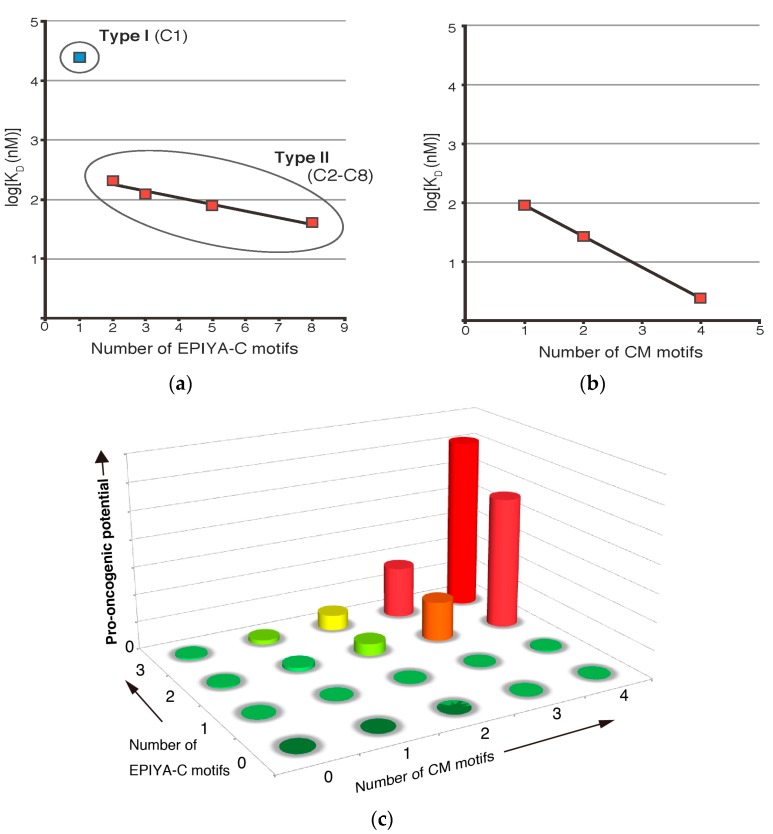Figure 2.
Quantitative analysis of binding affinities between Western CagA, containing varying numbers of EPIYA-C segments, and its targets SHP2 and PAR1b. (a) Based on their binding affinities to SHP2, Western CagA species are classified into two groups. Type I CagA refers to low-affinity CagA, which contains only a single copy of EPIYA-C motif. Type II CagA refers to high-affinity CagA species, which contain variably duplicated EPIYA-C repeats (Adapted and modified from [46]); (b) Increase in the number of CM motifs per CagA molecule exponentially enhances PAR1b-binding activity (Adapted and modified from [47]); (c) A conceptual graph depicting how the increase in the copy numbers of EPIYA-C and CM motifs synergistically contribute to the pro-oncogenic potential of Western CagA.

